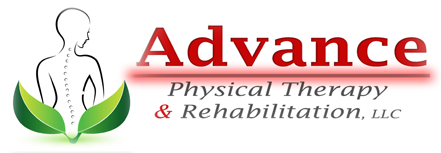
09 May Reduce Chronic Pain with Physical Therapy
When you’re in constant chronic pain, it’s natural to seek any remedy that might reduce your symptoms. However, many of the most common treatments for pain have significant side effects, and they can be highly debilitating in the long run. Learn more about how physical therapy can reduce chronic pain caused by arthritis, neuropathy, tendinitis, or a variety of other uncomfortable conditions.
How Does Physical Therapy Reduce Pain?
Instead of cutting you open or introducing dangerous drugs into your system, physical therapy marshals your body’s own defenses to protect you. This highly-effective group of pain-reduction techniques strengthens and reduces stress on painful or inflamed tissues to support natural healing.
There is no one-size-fits-all approach to physical therapy. Instead, physical therapists carefully examine the symptoms that their patients exhibit and develop unique treatment plans to reduce chronic pain.
Individuals with pain often pursue physical therapy in conjunction with other treatment methods. However, some patients find physical therapy to be so effective that they stop using other forms of treatment altogether.
What Are Some Effective Pain-Reducing Physical Therapy Techniques?
To best treat your particular symptoms, your physical therapist will develop a specially-tailored treatment plan that takes your unique circumstances into account. Beginning with an initial consultation, your physical therapist will use a variety of diagnostic tools to determine the best approach to relieving your pain.
Different types of physical therapy exercises and treatments work better for certain patients. Here are some examples of the types of physical therapy techniques that your therapist might use to reduce chronic pain:
1. Water Therapy
Chronic pain often makes it hard to move without experiencing debilitating symptoms. Buoyancy, however, drastically reduces your weight in the water, which improves your mobility.
When you have a herniated disc, for instance, compaction of your spine can cause serious pain whenever you try to move your upper or lower body. The effects of buoyancy reduce this pressure on your spine, which makes you better able to move around in the water without experiencing pain.
As you develop an exercise regimen to treat your pain, your physical therapist might begin by suggesting you try aqua aerobics. The strength you gain while in the water will directly translate to greater mobility on land.
2. Low-Impact Exercises
Low-impact exercises can be great additions or alternatives to water therapy. Walking is an excellent example of a low-impact exercise, but your pain might make it hard to walk. Instead, your physical therapist may suggest you try light exercise on an elliptical or cycling machine.
Rowing and kayaking are also great examples of low-impact exercises. Your physical therapist may also suggest you try Tai Chi or simple forms of yoga as you develop a treatment regimen that reduces your pain and related symptoms.
3. Stretching
Simple stretches can be especially effective for back pain. For instance, the trunk rotation stretch, hamstring stretch, hip flexor stretch, or child’s pose can all help reduce both lower and mid-back pain.
Before you try any stretches at home, however, make sure to consult with your physical therapist. Depending on the type of pain you’re experiencing, the wrong type of stretch could make your symptom worse.
4. Targeted Pain Relief Exercises
After performing a detailed examination and clearly diagnosing your symptoms, your physical therapist may prescribe a variety of targeted exercises. These exercises treat pain in specific parts of your body, and depending on your circumstances, some exercises will reduce your pain better than others. Consult with your physical therapist to determine which targeted exercises might be best for your situation.
5. Manual Therapy
Manual therapy is a hands-on approach to reducing your pain. To perform manual therapy, your physical therapist may use a variety of mobilization exercises, and he or she may also directly manipulate certain parts of your body.
Under certain circumstances, physical therapists may even use techniques like dry needling to reduce pain and inflammation at the source. You can use the temporary relief provided by manual therapy to perform exercises that will improve your strength and reduce your pain in the long term.
6. Massage Therapy
Your physical therapist may be a skilled massage therapist, or he or she might refer you to a trusted therapist in your community. Massage therapists take manual therapy to the next level; by expertly manipulating your bodily tissues, massage therapists reduce strain, tension and other factors that may be impeding your ability to heal effectively.
7. Electrical Stimulation
In some cases, electrical stimulation may be a viable treatment for your pain. While the days of electroshock therapy are long over, forms of light electrical stimulation, such as TENS, may be effective for reducing pain and inflammation in various parts of your body.
TENS works by delivering light electrical currents to affected parts of your body with adhesive pads. Proponents of this therapeutic modality suggest that TENS reduces pain by overloading your nervous system. It also appears that TENS causes your nervous system to produce endorphins, which naturally reduce pain.
8. Ultrasound
Physical therapists have used ultrasound therapy to reduce chronic pain since the 1950s. While there’s no clear consensus on the safety of this physical therapy modality, many tendinitis and arthritis patients experience relief from ultrasound therapy.
This therapeutic technique heats tissues deep inside of your body through a process called cavitation. This effect causes your tissues to expand and contract rapidly, which may speed up the healing process. Not all physical therapists believe that ultrasound therapy is an effective treatment modality.
9. Heat and Ice
You can reduce inflammation by applying cold to the area of the affected tissue. Once you have reduced inflammation with cold, applying heat may make your muscles work better. Your physical therapist will determine whether heat, cold, or a combination of the two would work best to reduce pain in your particular circumstances.




Sorry, the comment form is closed at this time.